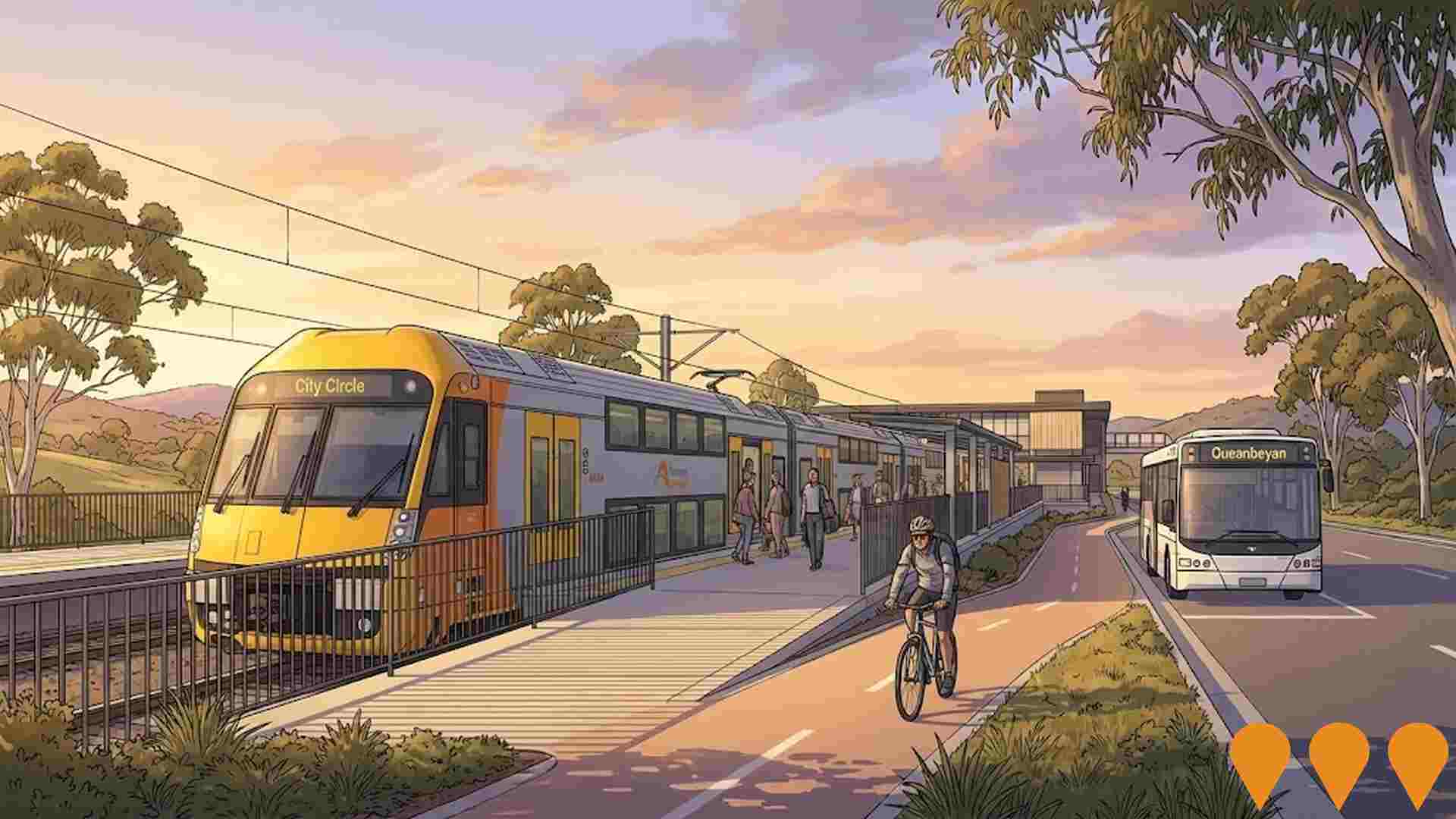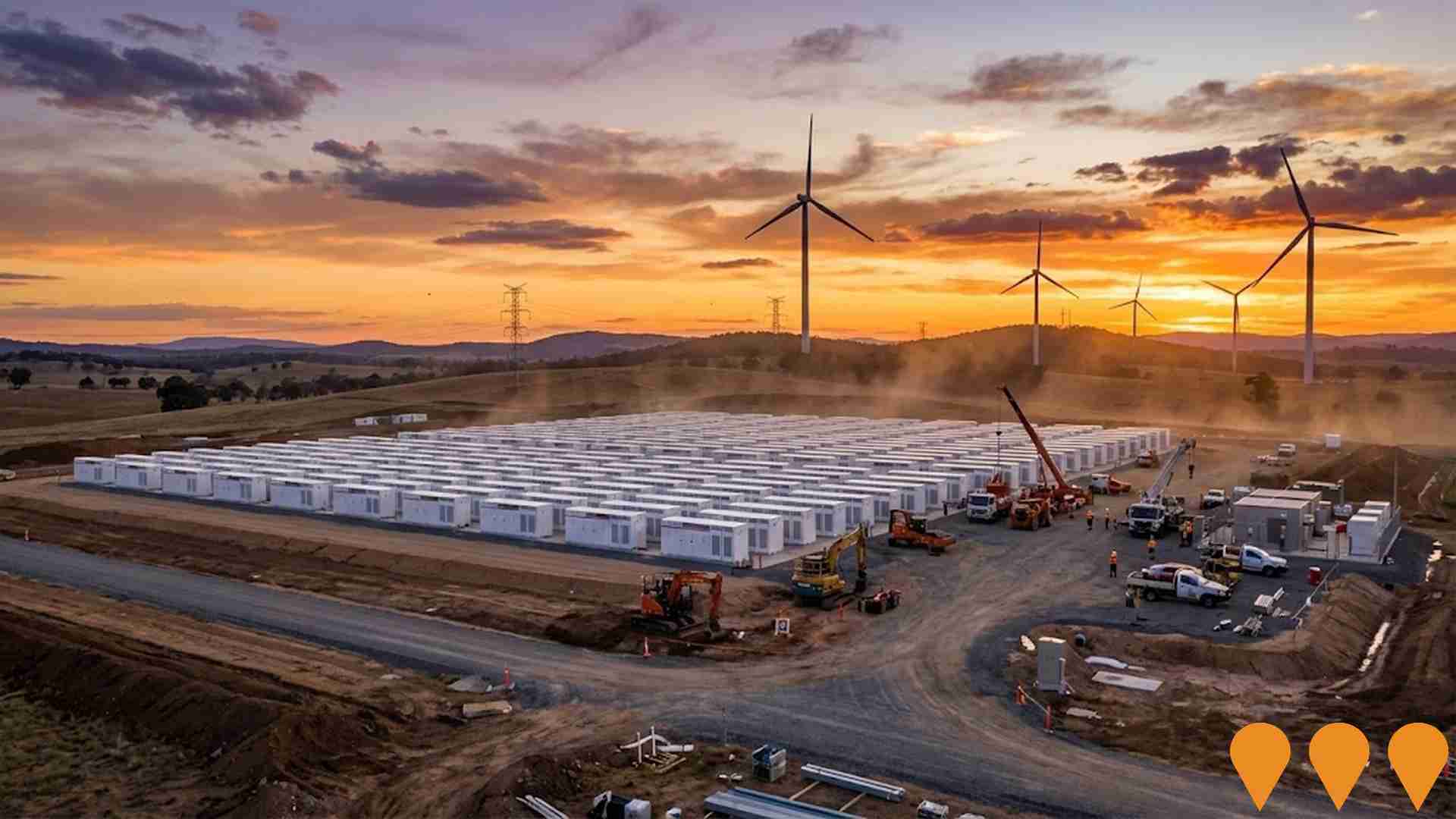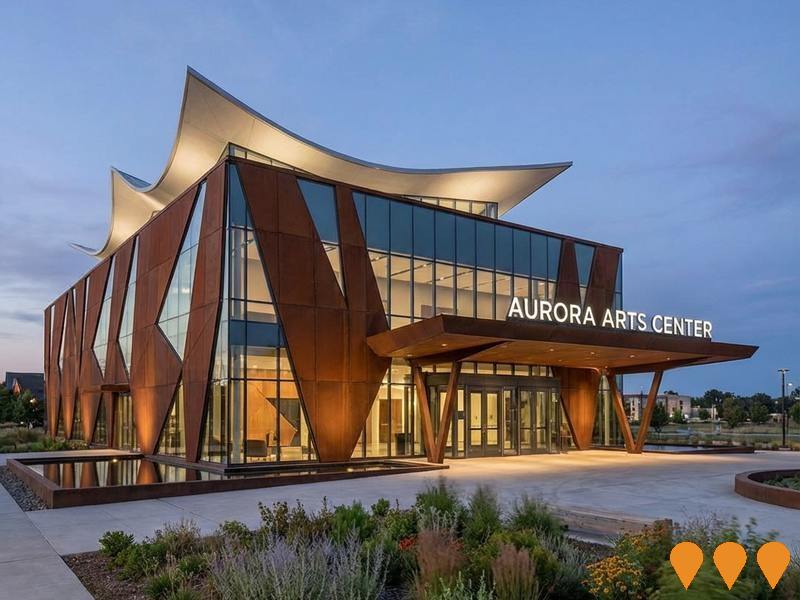Chart Color Schemes
est. as @ -- *
ABS ERP | -- people | --
2021 Census | -- people
Sales Activity
Curious about local property values? Filter the chart to assess the volume and appreciation (including resales) trends and regional comparisons, or scroll to the map below view this information at an individual property level.
Find a Recent Sale
Sales Detail
Population
Waramanga is positioned among the lower quartile of areas assessed nationally for population growth based on AreaSearch's assessment of recent, and medium term trends
Waramanga's population was approximately 2,743 as of August 2025. This marked a decrease of 42 people from the 2021 Census figure of 2,785, indicating a 1.5% decline since that date. The change is inferred from the estimated resident population of 2,733 in June 2024 and address validation since the Census date. This resulted in a population density ratio of 1,604 persons per square kilometer, higher than the average seen across national locations assessed by AreaSearch. While Waramanga's population decreased by 1.5% since the census, the SA3 area experienced a 0.5% growth, demonstrating divergent trends. Overseas migration primarily drove population growth in the area, contributing approximately 51.4% of overall population gains during recent periods.
AreaSearch adopted ABS/Geoscience Australia projections for each SA2 area as released in 2024 with 2022 as the base year. For areas not covered by this data and years post-2032, age group growth rates from the ACT Government's SA2 area projections were used, also based on 2022. Future demographic trends suggest a decline in overall population, with projections indicating a decrease of 242 persons by 2041 according to this methodology. However, specific age cohorts are expected to grow, notably the 85 and over group, projected to increase by 11 people during this period.
Frequently Asked Questions - Population
Development
AreaSearch assessment of residential development drivers sees a low level of activity in Waramanga, placing the area among the bottom 25% of areas assessed nationally
Waramanga has recorded approximately 3 residential properties granted approval per year. Over the past 5 financial years, from FY21 to FY25, 17 homes were approved, with an additional 2 approved so far in FY26. On average, this results in around 3.8 new residents per year for every home built during these years.
This indicates substantial supply lagging demand, which typically leads to heightened buyer competition and pricing pressures. New homes are being constructed at an average expected cost of $305,000. In FY26, commercial development approvals worth $494,000 have been recorded, reflecting the area's residential nature.
Compared to the Australian Capital Territory, Waramanga records roughly half the building activity per person and ranks among the 8th percentile of areas assessed nationally. This suggests limited buyer options while strengthening demand for established homes, which is lower than national averages, indicating market maturity and possible development constraints. Recent construction comprises 67% standalone homes and 33% attached dwellings, offering a mix of medium-density options across various price brackets. Population projections indicate stability or decline in Waramanga, which should reduce housing demand pressures, benefiting potential buyers.
Frequently Asked Questions - Development
Infrastructure
Waramanga has moderate levels of nearby infrastructure activity, ranking in the top 50% nationally
No changes can significantly affect a region's performance like alterations to local infrastructure, major projects, and planning initiatives. AreaSearch has identified zero projects that are expected to impact this area. Notable projects include Woden Town Square Precinct Redevelopment, Athllon Drive Duplication, The Hunter, and Canberra Hospital Master Plan, with the following list outlining those most likely to be relevant.
Professional plan users can use the search below to filter and access additional projects.
INFRASTRUCTURE SEARCH
 Denotes AI-based impression for illustrative purposes only, not to be taken as definitive under any circumstances. Please follow links and conduct other investigations from the project's source for actual imagery. Developers and project owners wishing us to use original imagery please Contact Us and we will do so.
Denotes AI-based impression for illustrative purposes only, not to be taken as definitive under any circumstances. Please follow links and conduct other investigations from the project's source for actual imagery. Developers and project owners wishing us to use original imagery please Contact Us and we will do so.
Frequently Asked Questions - Infrastructure
Canberra Hospital Master Plan
Long-term transformation of Canberra Hospital campus (2021-2041). The new Critical Services Building (Building 5) opened in 2023. Multiple stages are now in construction or detailed planning, including SPIRE Stage 1 (new emergency, surgical and intensive care facilities) and ongoing campus renewal works to deliver modern clinical facilities.

Canberra Light Rail Stage 4 - Woden to Tuggeranong
Proposed extension of Canberra's light rail network from Woden Town Centre south to Tuggeranong Town Centre via Mawson and the Athllon Drive corridor. This future stage aims to complete the north-south radial mass transit spine, connecting major residential, employment and activity centres while supporting bus, cycling, walking and private vehicle integration.
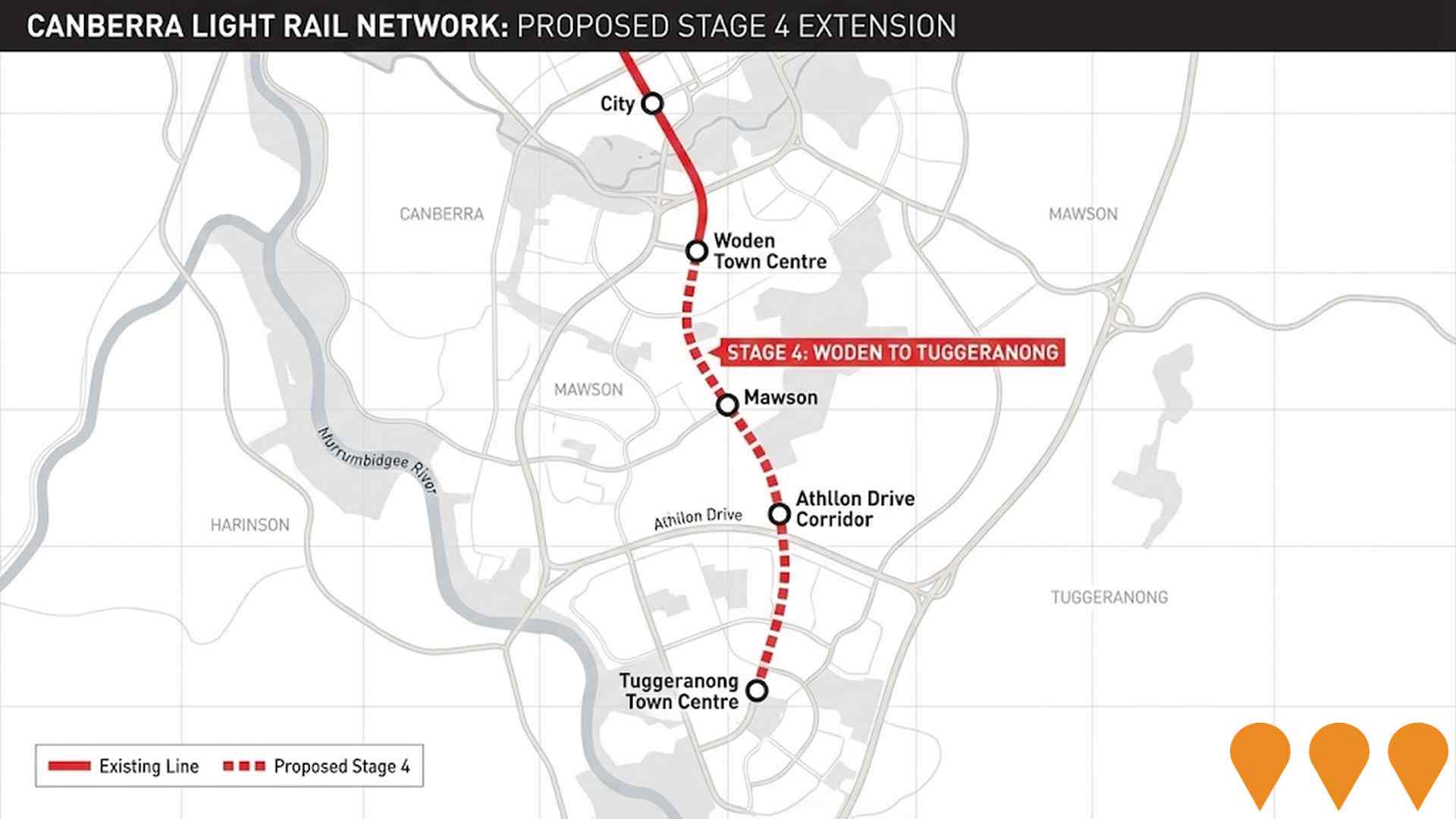
Woden Town Square Precinct Redevelopment
A major mixed-use urban renewal precinct featuring a new public town square, residential apartments, commercial office space, retail, and community facilities as the centrepiece of Woden's revitalisation.

Canberra Hospital Critical Services Building (SPIRE Centre)
Australia's first fully-electric hospital building, the Canberra Hospital Critical Services Building (also known as SPIRE Centre), is an eight-storey, 45,000 square metre facility. It includes a new Emergency Department with 128 treatment spaces, a 48-bed Intensive Care Unit with two outdoor terraces, 22 operating theatres, 148 inpatient beds, cardiac catheter laboratories, and enhanced radiology and pathology services. The largest healthcare infrastructure project in ACT history, it was built by Multiplex with a 5 Star Green Star design rating, featuring innovative sustainability measures. Completed and opened August 2024.

Athllon Drive Duplication
The Athllon Drive duplication project upgrades a key arterial road from Woden to Tuggeranong. It includes duplicating 2.4 km between Sulwood Drive and Drakeford Drive, and 600 m between Hindmarsh Drive and Melrose Drive. Features encompass lane duplication, new traffic lights at multiple intersections, upgraded bus stops, active travel paths for cyclists and pedestrians, water quality improvements for Lake Tuggeranong, and a new underpass under Sulwood Drive. Enabling works commenced in 2024 and continue into 2025, with main construction anticipated to span 2-3 years post-planning approvals. The initiative enhances safety, reduces congestion, and supports public transport and future urban growth.
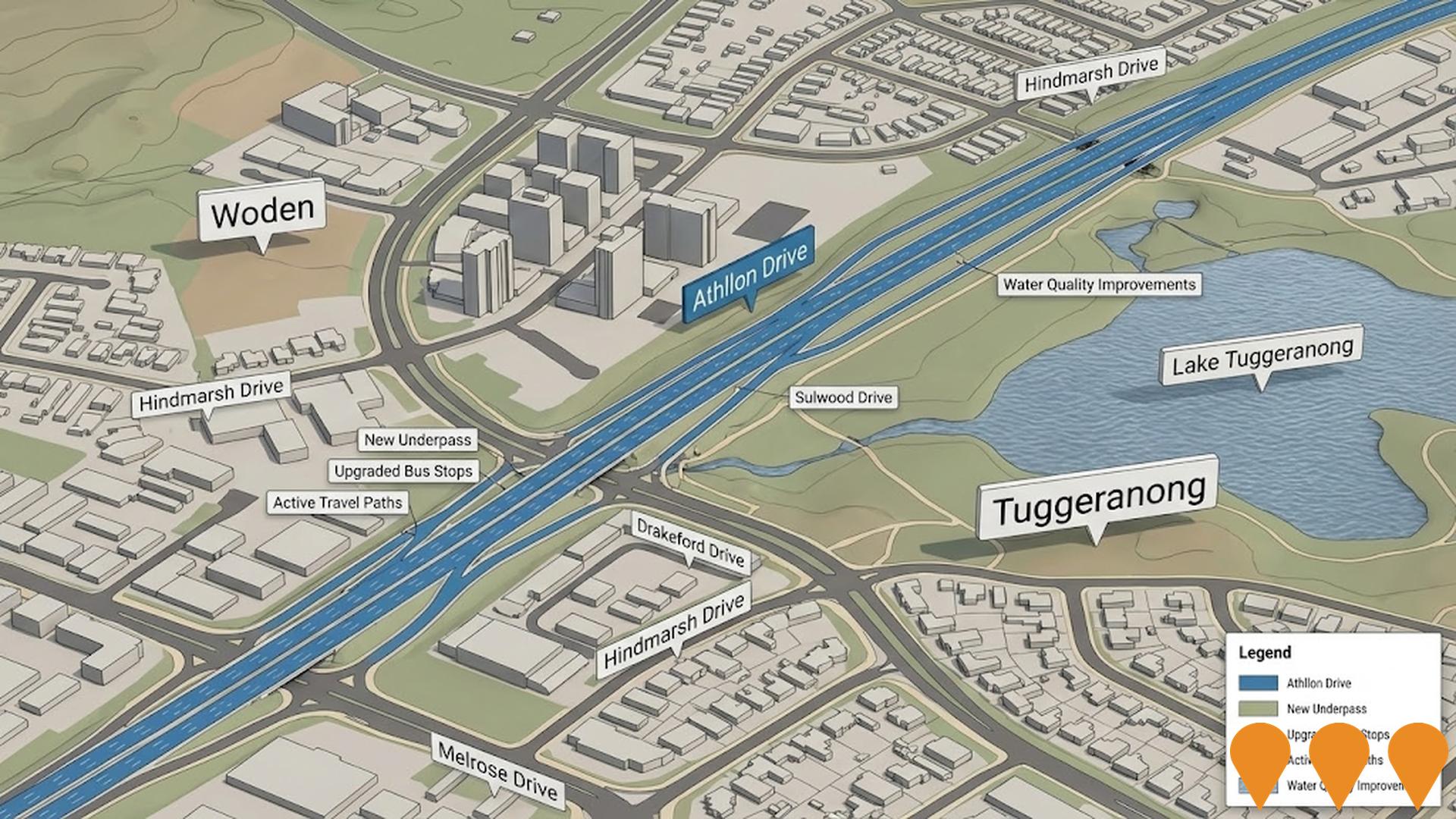
Molonglo Group Centre to Town Centre Transition
Transition of Molonglo Group Centre to Town Centre status to accommodate 70,000+ residents by 2050. Will include college, library, community centre, transport interchange and major commercial centre development.
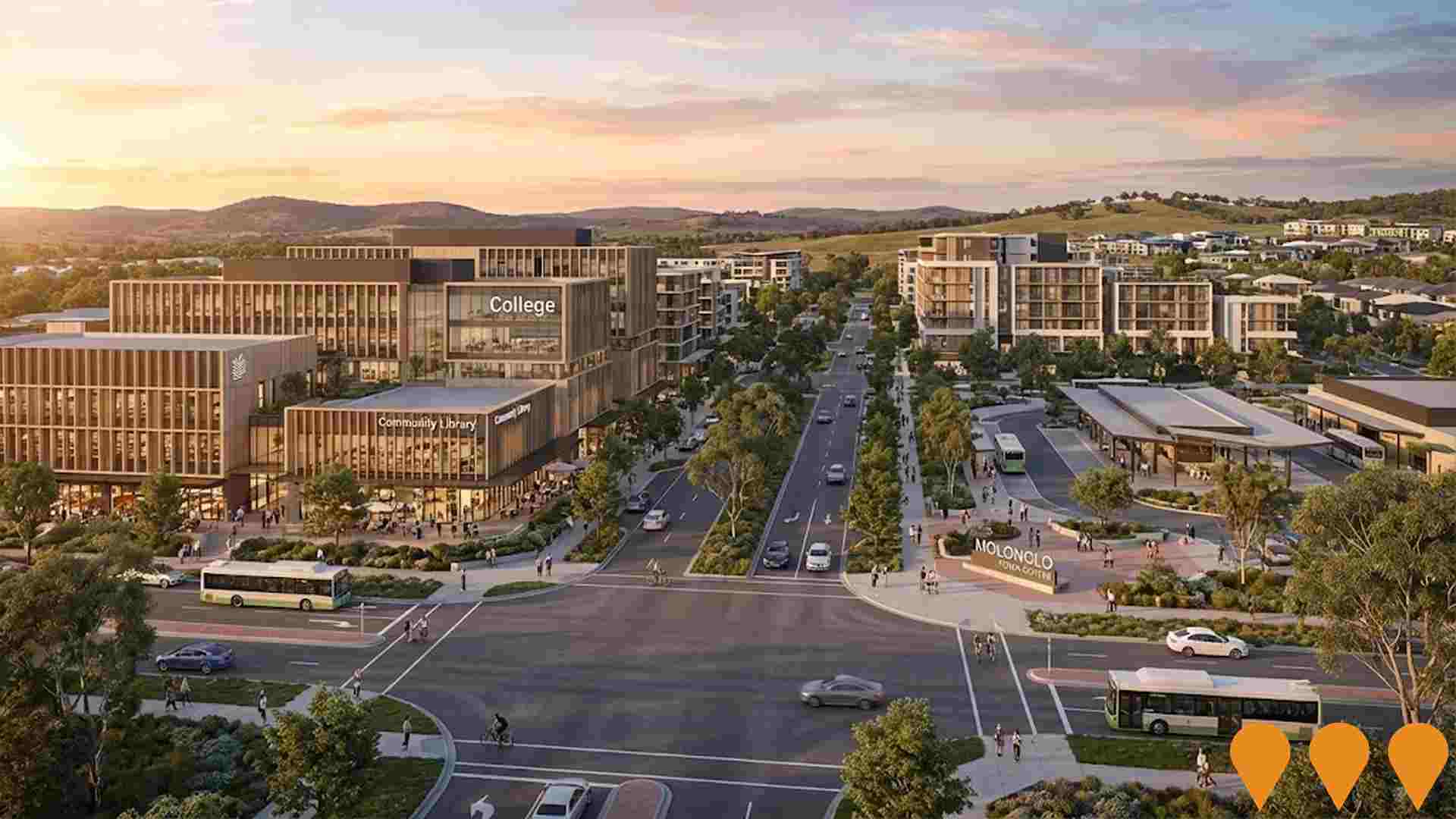
Enhanced bus and light rail corridors (Belconnen & Queanbeyan to Central Canberra)
ACT is progressing an integrated program to enhance high-frequency bus and future light rail corridors that link Belconnen and Queanbeyan with central Canberra. Light Rail Stage 2A (City to Commonwealth Park) commenced construction in early 2025 with services targeted from 2028, while planning and approvals continue for Stage 2B to Woden. The ACT Government has acknowledged and is planning upgrades for the Belconnen-to-City bus corridor as groundwork for a future east-west light rail Stage 3, and is coordinating cross-border public transport initiatives with NSW through the Queanbeyan Region Integrated Transport Plan and the ACT-NSW MoU for Regional Collaboration.
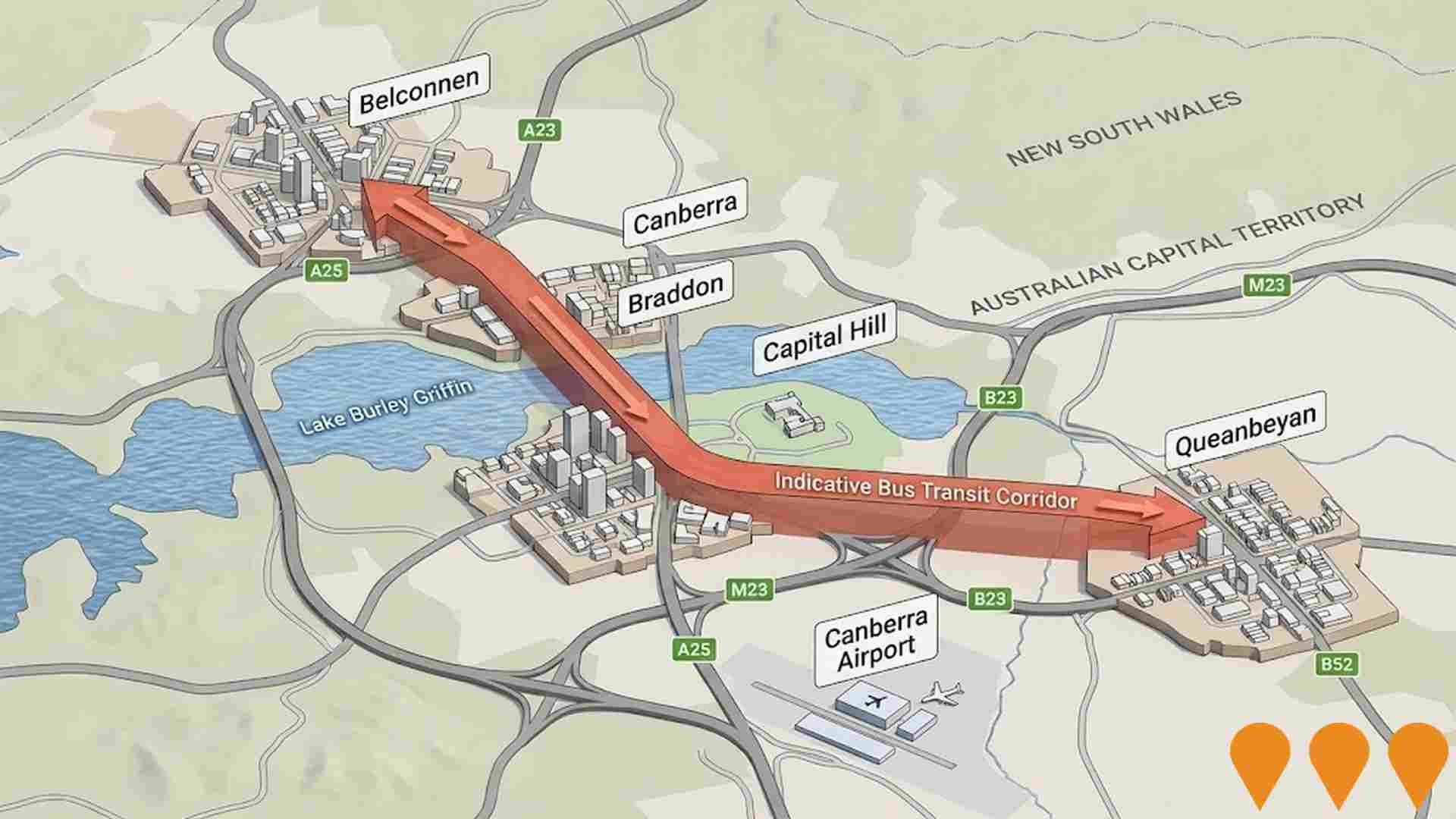
HumeLink
HumeLink is a new 500kV transmission line project connecting Wagga Wagga, Bannaby, and Maragle, spanning approximately 365 km. It includes new or upgraded infrastructure at four locations and aims to enhance the reliability and sustainability of the national electricity grid by increasing the integration of renewable energy sources such as wind and solar.
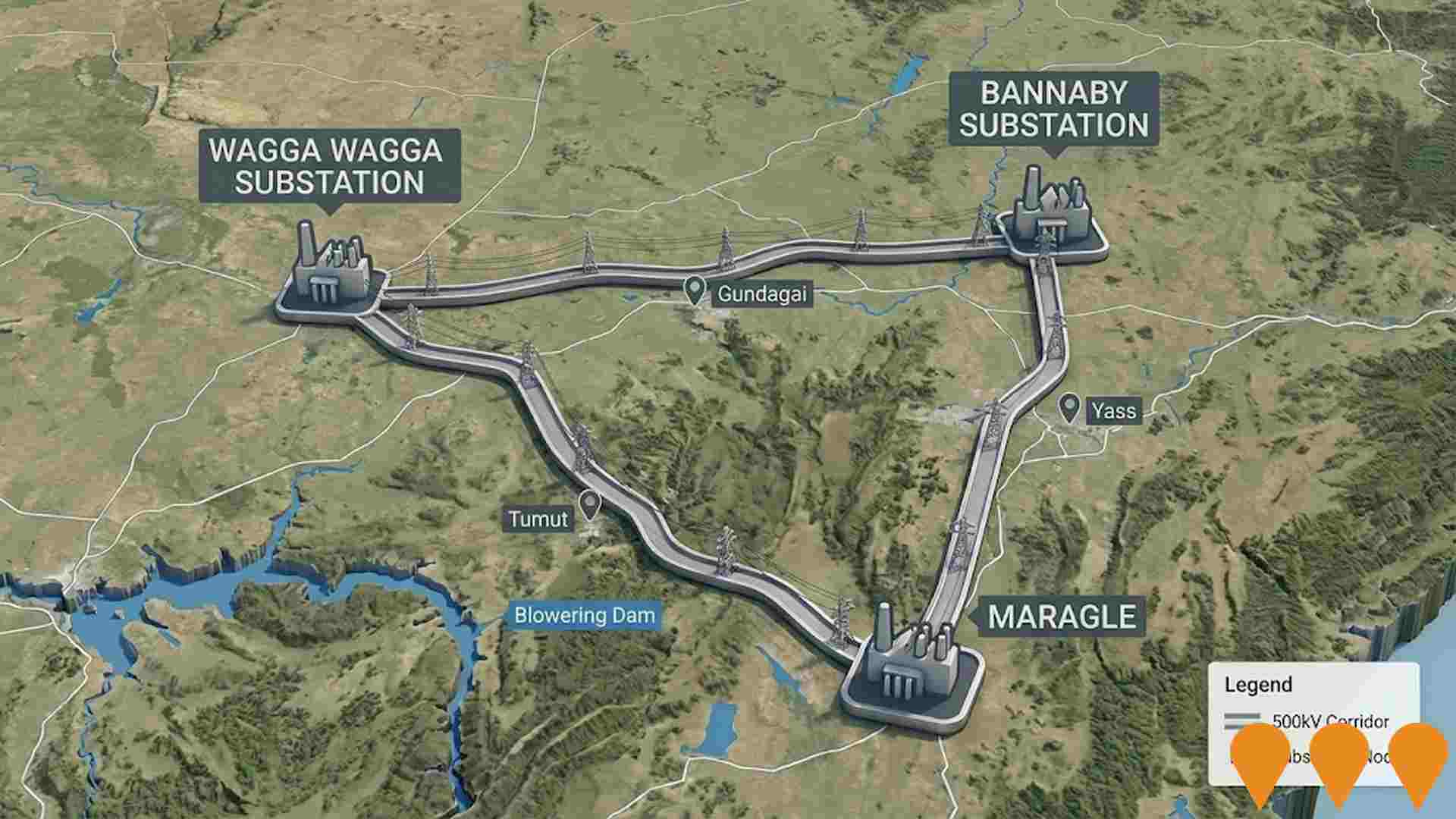
Employment
The employment landscape in Waramanga shows performance that lags behind national averages across key labour market indicators
Waramanga has a highly educated workforce with significant representation in essential services sectors. The unemployment rate was 3.7% as of June 2025, with an estimated employment growth of 2.6% over the past year.
As of that date, 1417 residents were employed while the unemployment rate was 0.3% higher than the Australian Capital Territory's (ACT) rate of 3.4%. The workforce participation rate in Waramanga was 63.9%, compared to ACT's 69.6%. Leading employment industries among residents included public administration & safety, health care & social assistance, and professional & technical services.
Conversely, accommodation & food employed only 4.7% of local workers, lower than ACT's 6.5%. The predominantly residential area appears to offer limited local employment opportunities, as indicated by the difference between Census working population and resident population numbers. In the 12-month period ending June 2025, employment increased by 2.6%, while the labour force grew by 1.6%, leading to a fall in unemployment rate of 1.0 percentage points. This contrasts with ACT where employment rose by 1.9%, the labour force grew by 1.6%, and unemployment fell by 0.3 percentage points. Jobs and Skills Australia's national employment forecasts from May 2025 project national employment growth of 6.6% over five years and 13.7% over ten years, with varying growth rates across industry sectors. Applying these projections to Waramanga's employment mix suggests local growth of approximately 6.5% over five years and 13.4% over ten years, based on a simple weighting extrapolation for illustrative purposes only.
Frequently Asked Questions - Employment
Income
The economic profile demonstrates exceptional strength, placing the area among the top 10% nationally based on comprehensive AreaSearch income analysis
AreaSearch's latest postcode level ATO data for financial year 2022 shows median income in Waramanga at $66,732 and average income at $79,388. This compares to Australian Capital Territory's median income of $68,678 and average income of $83,634. Based on Wage Price Index growth of 13.6% since financial year 2022, estimated current incomes are approximately $75,808 (median) and $90,185 (average) as of September 2025. From the 2021 Census, Waramanga's household, family and personal incomes rank highly nationally, between the 81st and 90th percentiles. The earnings profile shows 28.0% of residents earning $1,500 - 2,999 weekly, mirroring the broader area where 34.3% fall within this bracket. Higher earners make up a substantial presence with 36.8% exceeding $3,000 weekly. Housing accounts for 13.5% of income, and residents rank highly in disposable income at the 83rd percentile nationally. The area's SEIFA income ranking places it in the 8th decile.
Frequently Asked Questions - Income
Housing
Waramanga is characterized by a predominantly suburban housing profile, with a higher proportion of rental properties than the broader region
Waramanga's dwelling structures, as per the latest Census, comprised 77.4% houses and 22.6% other dwellings (semi-detached, apartments, 'other' dwellings). In comparison, Australian Capital Territory had 81.7% houses and 18.2% other dwellings. Home ownership in Waramanga stood at 32.4%, with mortgaged dwellings at 38.9% and rented ones at 28.7%. The median monthly mortgage repayment was $2,175, below the Australian Capital Territory average of $2,251. The median weekly rent figure was $379, compared to Australian Capital Territory's $420. Nationally, Waramanga's mortgage repayments were higher at $2,175 than the Australian average of $1,863, and rents exceeded the national figure of $375 at $379.
Frequently Asked Questions - Housing
Household Composition
Waramanga has a typical household mix, with a lower-than-average median household size
Family households constitute 69.0% of all households, including 32.8% couples with children, 24.7% couples without children, and 10.7% single parent families. Non-family households comprise the remaining 31.0%, with lone person households at 27.5% and group households at 2.9%. The median household size is 2.5 people, which is smaller than the Australian Capital Territory average of 2.6.
Frequently Asked Questions - Households
Local Schools & Education
Educational achievement in Waramanga places it within the top 10% nationally, reflecting strong academic performance and high qualification levels across the community
Educational attainment in Waramanga is notably high, with 44.9% of residents aged 15 and above holding university qualifications compared to the national average of 30.4%. The area's educational advantage is evident in its high proportion of bachelor degrees (26.0%), postgraduate qualifications (13.4%), and graduate diplomas (5.5%). Vocational credentials are also prevalent, with 26.7% of residents aged 15 and above holding such qualifications, including advanced diplomas (10.9%) and certificates (15.8%). Educational participation is high, with 31.3% of residents currently enrolled in formal education.
This includes primary education (11.4%), secondary education (8.0%), and tertiary education (6.0%). Waramanga's three schools have a combined enrollment of 1,446 students as of the latest data. The area demonstrates above-average socio-educational conditions with an ICSEA score of 1096. Education provision is balanced, with two primary schools and one secondary school serving distinct age groups. Waramanga functions as an education hub, offering 52.7 school places per 100 residents, significantly higher than the regional average of 14.8, and attracts students from surrounding communities.
Frequently Asked Questions - Education
Schools Detail
Nearby Services & Amenities
Transport
Transport servicing is moderate compared to other areas nationally based on assessment of service frequency, route connectivity and accessibility
Waramanga has 20 active public transport stops, all of which are bus stops. These stops are served by three different routes that together facilitate 515 weekly passenger trips. The accessibility of these transport services is considered good, with residents typically situated 214 meters away from the nearest stop.
On average, there are 73 trips per day across all routes, amounting to roughly 25 weekly trips per individual stop.
Frequently Asked Questions - Transport
Transport Stops Detail
Health
Health outcomes in Waramanga are marginally below the national average with common health conditions slightly more prevalent than average across both younger and older age cohorts
Waramanga shows below-average health indicators, with common conditions more prevalent than average across both younger and older age groups.
Mental health issues affect 9.4% of residents, while arthritis impacts 8.9%. A total of 67.7% report no medical ailments, compared to 66.3% in the Australian Capital Territory. Private health cover is exceptionally high at approximately 59%, covering 1,629 people. The area has 19.2% residents aged 65 and over (527 people), lower than the ACT's 20.6%. Health outcomes among seniors are above average, aligning with the general population's health profile.
Frequently Asked Questions - Health
Cultural Diversity
The level of cultural diversity witnessed in Waramanga was found to be above average when compared nationally for a number of language and cultural background related metrics
Waramanga had a cultural diversity level above average, with 22.6% of its residents born overseas and 15.7% speaking a language other than English at home. Christianity was the predominant religion in Waramanga, accounting for 42.2% of people. Notably, Judaism was overrepresented, comprising 0.2% of Waramanga's population compared to the Australian Capital Territory average of 0.2%.
The top three ancestry groups were English (25.6%), Australian (25.4%), and Irish (10.4%). Some ethnic groups showed notable differences in representation: Hungarian was overrepresented at 0.6% (regional average 0.6%), Scottish at 9.7% (regional average 8.8%), and Serbian at 0.4% (regional average 0.3%).
Frequently Asked Questions - Diversity
Age
Waramanga's population is slightly younger than the national pattern
Waramanga's median age is 38 years, which is higher than the Australian Capital Territory average of 35 but equivalent to the Australian median of 38. Compared to the Australian Capital Territory, Waramanga has a higher proportion of residents aged 5-14 (14.9%) but fewer residents aged 25-34 (11.7%). Between the 2021 Census and now, the population aged 35-44 has grown from 15.1% to 16.7%, while the proportion of residents aged 45-54 has declined from 12.9% to 11.3%. Similarly, the percentage of residents aged 25-34 has decreased from 12.9% to 11.7%. By 2041, Waramanga's age profile is projected to change significantly. The population aged 85 and above is expected to grow by 25%, adding 14 residents to reach a total of 75. Residents aged 65 and above will drive all population growth, highlighting demographic aging trends. Conversely, the populations aged 45-54 and 75-84 are projected to decline.
